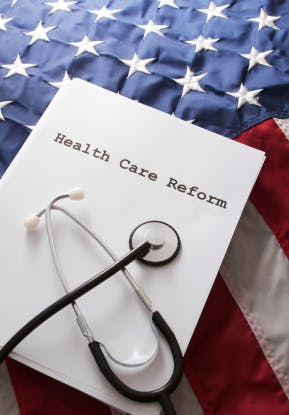This year’s been a quiet in terms of health care reform.
There aren’t major changes as there were last year or as there will be in 2014. Because of that, many employers are turning down the dial on health care reform messages and information.
That’s a mistake.
With annual enrollment about to steamroll us, employers have a brilliant opportunity to introduce what’s coming down the pike — which will be dramatic, no matter the company size. Employers are facing decisions about whether to continue offering benefits and how rich to keep their benefits plans.
4 rules you should be focusing on
What’s driving these decisions is the health care reform timeline. In 2014, employers will face a number of new requirements, possible penalties and a potential exit hatch: health insurance exchanges.
Despite some startling projections and thoughtful rejoinders, our magic 8 ball’s been dreadfully unwilling to deliver concrete answers about employers dropping health insurance. I spoke with a few benefits strategists and most agree that large employers will not (immediately) drop health insurance but will shift costs to their employees and change their plan design. That’s supported by the research. Smaller companies are likely to give their employees a wad of cash and turn them loose on the exchanges.
One of the people I spoke with is Sanjeev Wadhwa, a former Hewitt principal in the health management consulting practice and current managing principal at Triniti Consulting Group. We both agreed that companies need to prepare their employees — and not in the 11th hour, but starting now. This is a major change, and as with any change initiative, certain rules apply. Some of the biggies are:
- Employees want to understand what lies ahead. They want the big picture.
- Employees don’t care that you don’t know everything. They want to know what you know when you know it.
- Employees expect that you’ll also share what you don’t know and when you will — and how you’ll decide.
- Employees (and you) should expect a degree of discomfort. To the degree that you involve employees in certain decisions, whether that be design or communication-related, you’ll lessen those feelings.
Use annual enrollment to communicate health reform issues
“Employers need to revisit their health care strategy today in light of new opportunities that will be available in 2014,” Sanjeev said. “The four components of their strategy need to include these key elements: managing risk, building employee acceptance, providing support, and focusing on health and wellness. The financial and compliance risk approach will define whether an employer continues to provide benefits or starts migrating toward a defined contribution approach or to exiting completely.”
Based on that decision, employers need to determine what support and guidance, or new benefits, to give employees. “Employers that continue to provide benefits may need other physician access channels, such as telemedicine or onsite clinicians,” Sanjeev explained, “since potentially 45 million currently uninsured people may be entering a health care system that’s already suffering from a shortage of physicians.”
With my clients, I’m beginning by slipping messages about the future of their employee benefits into annual enrollment materials, and I’m suggesting they cover it in any in-person employee meetings. I’m also suggesting they create a long-term communication strategy that includes more face-to-face meetings with employees. It’s important to hear employees’ concerns and priorities as well as their level of understanding. This can be particularly useful for an employer who’s evaluating alternatives, and for when they’re done doing so.
It’d be a mistake for employers to postpone communicating with employees until more information’s known or changes are imminent. This year’s annual enrollment is the perfect opener for explaining the choices and the strategy and values that’ll guide the company’s ultimate decision.
Routine, ongoing communications that flow from there can put an employer’s investment in health benefits into “greater context of how that investment impacts company financial performance,” Sanjeev added. “This starts building a foundation for the ultimate strategy an employer adopts, but also allows them to build trust with their employees.” And since the role of wellness in an organization may focus more on productivity than on health care costs, we both recognized now’s the perfect opportunity to re-emphasize the connection between the future and today’s focus on prevention and wellness.
Fallow times are not inactive years; they’re strategic and preparatory ones.
This was originally published on Fran Melmed’s Free-Range Communication blog.
